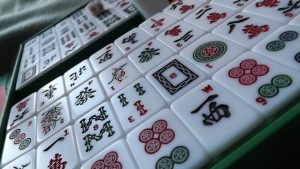The Qing dynasty was China’s last imperial dynasty, ruled by the Manchu nomadic ethnic group originating from the country’s northeastern part from 1636 to 1912. China had already created major inventions in the time of Ancient and Imperial China, from the Xia to Ming dynasties. Notably, the paper was invented in 105 AD by the director of the Imperial Workshops at Luoyang, Cai Lun. Meanwhile, gunpowder was first used in the 9th century AD. Other breakthroughs included the development of woodblock printing and the conception of the compass.
During the Qing dynasty, inventions continued to emerge despite the turbulent uprisings and conflicts such as the White Lotus Rebellion, the First Opium War, and the Taiping Rebellion. The rules of Emperor Kangxi from 1661 to 1772 and Emperor Qianlong from 1735 to 1796 were still considered the golden age of prosperity.
Inventions
Machine Gun
The firearms expert Dai Zi constructed the first machine gun at the end of the 17th century. Prince Kang Jieshu, the imperial Manchu son, was defending Dai Zi’s hometown of Zhejiang when the expert presented his “Lianzhu Gun” to him. He also completed the creation of the Weiyuan General Cannon, which the government used against the Dzungar Rebellion.
Mahjong
According to Jelte Rep, the writer of The Great Mahjong Book and the information booklet The History and Culture of Mahjong, Zhen (Chen) Yumen conceived the game of mahjong in 1846. He was a diplomat from Ningbo who was likely to have derived the game from a card game during the Tang dynasty that used wood and ivory formed into card-like shapes. The popular Mahjong is a four-player game that uses 144 tiles with symbols and Chinese characters. The goal of the game is to form four sets, with each player receiving 13 tiles at the start of the game and drawing and discarding one tile for each of their turns. It became famous overseas, especially in America, during the 1920s.
Nickel silver
Nickel silver, also known as German silver or Argentan, was a combination of copper, nickel, and zinc. It was first utilized during the Qing dynasty as a base metal for silverware and cutlery. Other items such as musical instruments and accessories were also made with a copper alloy. This was later exported to the West and continued to be called the Chinese word “baitong” or “paktong”.
Stinkpot
The 19th-century weapon called the stinkpot was composed of an earthenware pot with gunpowder, nails, and sulfur inside it. It produced a suffocating pungence that was hurled at the enemy, confusing the opposing camp. These were usually employed in naval battles during the First Opium war and were mentioned by the British Admiral William Robert Kennedy in Hurrah for the Life of a Sailor – Fifty Years in the Royal Navy.
Innovations
Localized Tax System
The Yongzheng emperor, who reigned from 1722 to 1735, although not as popular as his predecessor Kangxi Emperor and his successor known as Qianlong Emperor, achieved the meticulous undertaking of establishing an organized state tax system. The old Ming tax system involved a focus on providing revenues that would fund the central state but left the local government with insufficient funds to function. Conversely, Yongzheng advocated for a specific fund set for each specific local area of government to allow them to progress through the building of infrastructures and other projects to improve the community.
Printing Production
Considered to be one of the most important inventions during the Qing dynasty, printing production as an industry was a major development that caused the flourishing of literature and poetry. While the act of printing had already been done before the Qing period, mass production through private printing workshops was not developed until this time. Moveable type printing was first performed by Bi Sheng during the Song dynasty and became more accessible through the years.
Secret Palace Memorial system
Government officials refined their communication with the state by submitting memorials directly to the emperor and vice-versa through locked containers. These memorials were official communications to the ruler and included information on local dealings such as prices, harvests, weather, and local gossip that affected country, provincial, and national levels. This new communication method was established by the first Qing emperor Kangxi and continued by his successors. It was particularly favored by the rulers who received more accurate reports in this way.
Weapons and Armor
The infantry division of China advanced in their construction of bronze spears and long swords. These changes promoted more protection and ease with stabbing the opponent. Lighter armor was also manufactured for soldiers to move quicker on the battlefield.
